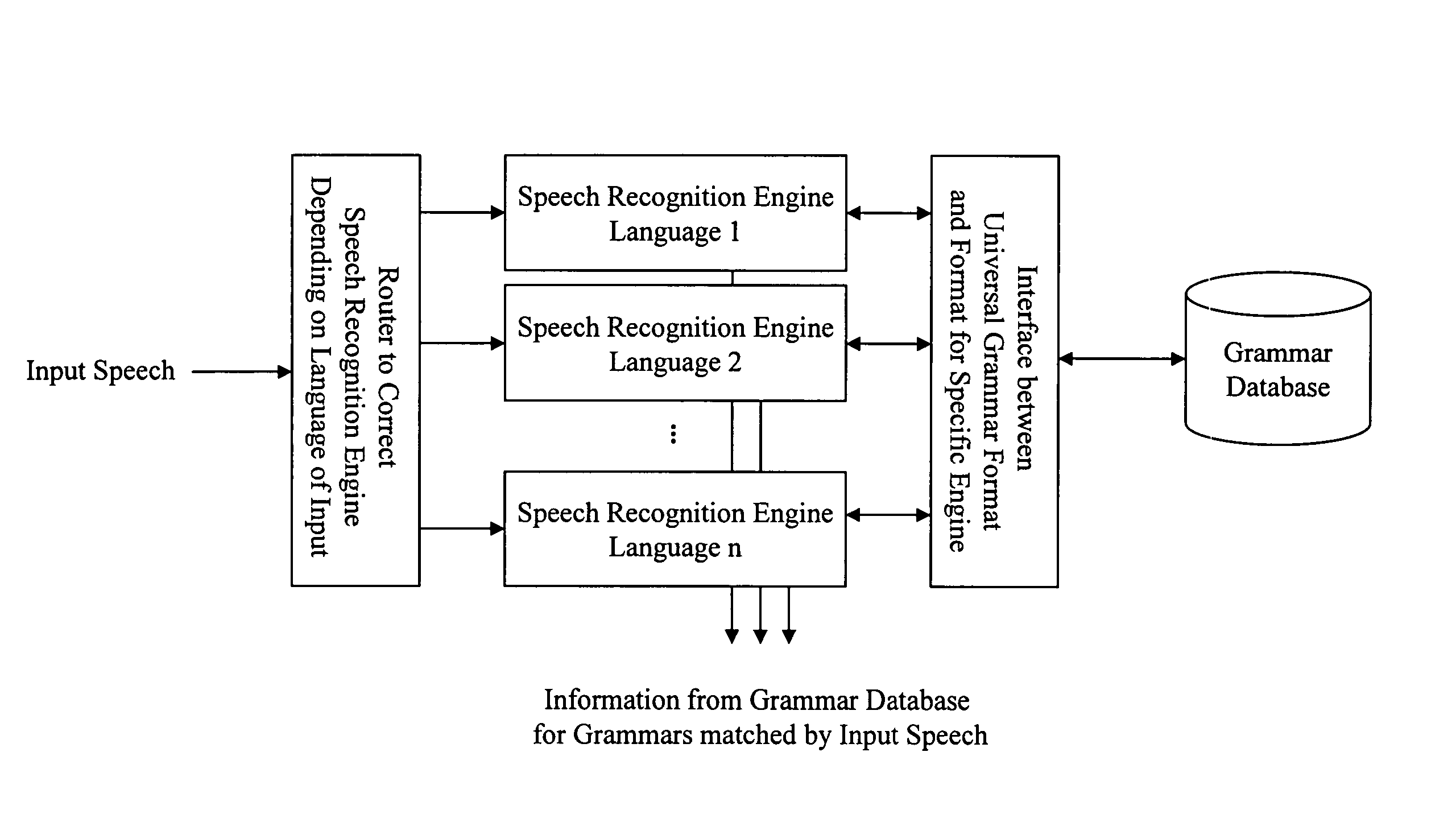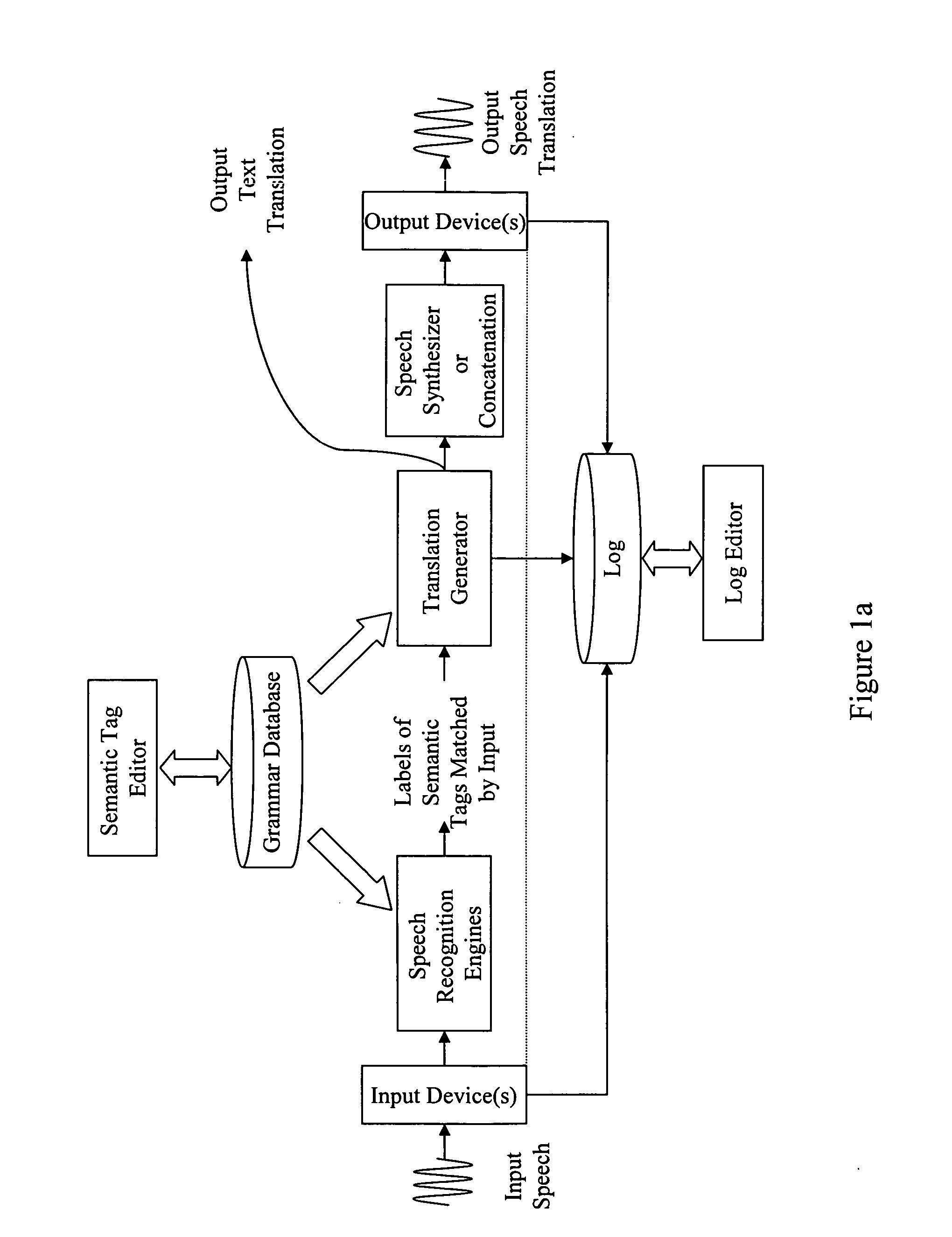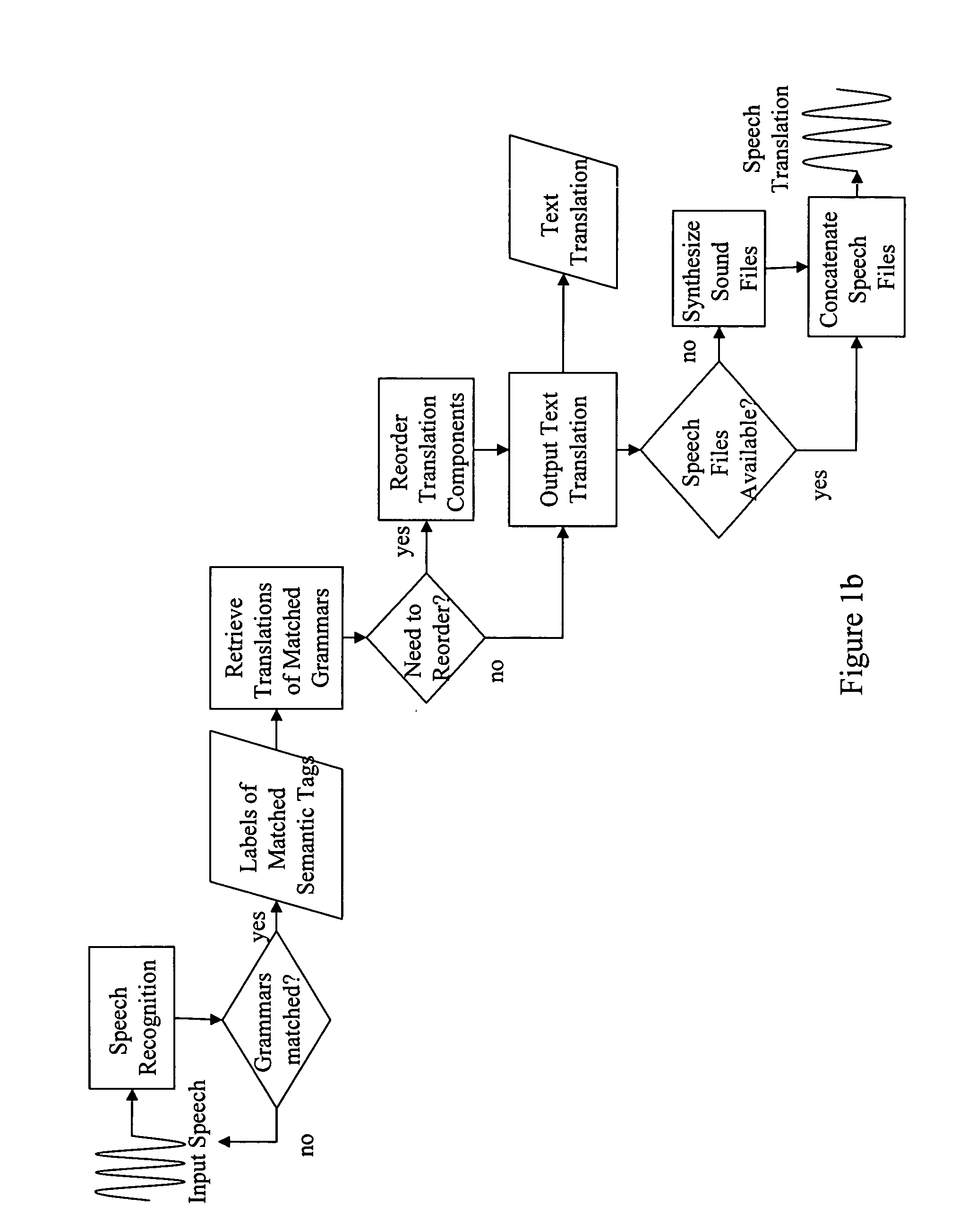Speech-to-speech translation system with user-modifiable paraphrasing grammars
a speech-to-speech translation and grammar technology, applied in the field of speech-to-speech translation systems, can solve the problems of high error rate of mt systems, inability to use the system with confidence, and different meanings of input sentences, so as to increase the accuracy of the speech recognition component and thus the overall system accuracy
- Summary
- Abstract
- Description
- Claims
- Application Information
AI Technical Summary
Benefits of technology
Problems solved by technology
Method used
Image
Examples
Embodiment Construction
[0072] The various presently preferred embodiments are described below. Referring to FIG. 1a, the speech-to-speech translation device includes at the front end one or more input devices, which optionally includes one or two microphones each. In the case of multiple microphones, the microphones can be connected to the speech-to-speech translation device through a signal-splitting device connected to a single USB port, microphone jack, or other port. The signal-splitting device includes buttons to allow the user to control which microphone is live and which processing mode the translation device is operating in. The user guide of an embodiment of the present invention is attached herein as Attachment B.
[0073] Referring to FIG. 2, also at the front end is a graphical interface which can display for the user the current domain, the phrases included in the currently active grammar, the responses included in the currently active grammar, visual feedback of the speech recognition and tran...
PUM
 Login to View More
Login to View More Abstract
Description
Claims
Application Information
 Login to View More
Login to View More - R&D
- Intellectual Property
- Life Sciences
- Materials
- Tech Scout
- Unparalleled Data Quality
- Higher Quality Content
- 60% Fewer Hallucinations
Browse by: Latest US Patents, China's latest patents, Technical Efficacy Thesaurus, Application Domain, Technology Topic, Popular Technical Reports.
© 2025 PatSnap. All rights reserved.Legal|Privacy policy|Modern Slavery Act Transparency Statement|Sitemap|About US| Contact US: help@patsnap.com



